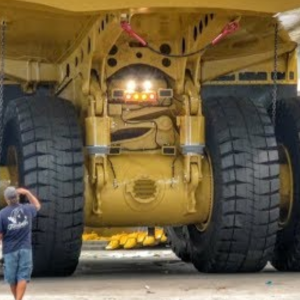
General Motors has produced some far-out prototypes over the years, but few as wild as this one: the triple-jointed 1964 Chevrolet Sidewinder.
As we’ve seen, an articulated chassis can add a lot to a vehicle’s off-road capabilities. (See our recent feature on the Willock Swivel Frame trucks here.) This 1964 Chevrolet experiment, developed in collaboration with General Motors Defense Research Laboratories, took the concept one step further: It was double-articulated, or triple-jointed if you will. The chassis was constructed in three segments that could move independently through 15 degrees of roll and 25 degrees of yaw, which also provided the articulating motion for the vehicle’s power-hydraulic steering. Hence the name Sidewinder: Its steering reminded the engineers of a snake.

While the Sidewinder was radical in design, it was engineered to use a number of off-the-shelf components. An aluminum Buick V8 engine (read about the lightweight 215 here) nestled in the center module, coupled to a two-speed automatic transmission and torque converter combination and a Spicer transfer case. The front and rear axles were standard one-ton Chevy truck pieces, and the disc brakes were from the GM parts catalog as well. Among the more exotic items were the 48-inch tall 1400 x 20 low-pressure tires, which were normally inflated to only 5-7 psi. Wheelbase was 132 inches, and each of the three chassis sections could be replaced in 20 minutes or less.
With its wide range of articulation, 15 inches of ground clearance, and no overhang to speak of, the Sidewinder could reportedly climb most anything and go most anywhere. And thanks to the 48-inch tall tires, it could walk right over a 24-inch wall and could even swim, with the tires providing the flotation, steering, and propulsion. Speed was 2.5 mph in the water and 60 mph on dry land. The Sidewinder was successful enough to inspire a somewhat larger, Chevy V8-powered version named the TASC, or Tactical Articulated Swimmable Carrier. The TASC was invited to Fort Knox, Kentucky for military trials, but from there it doesn’t appear the program went any further. .






